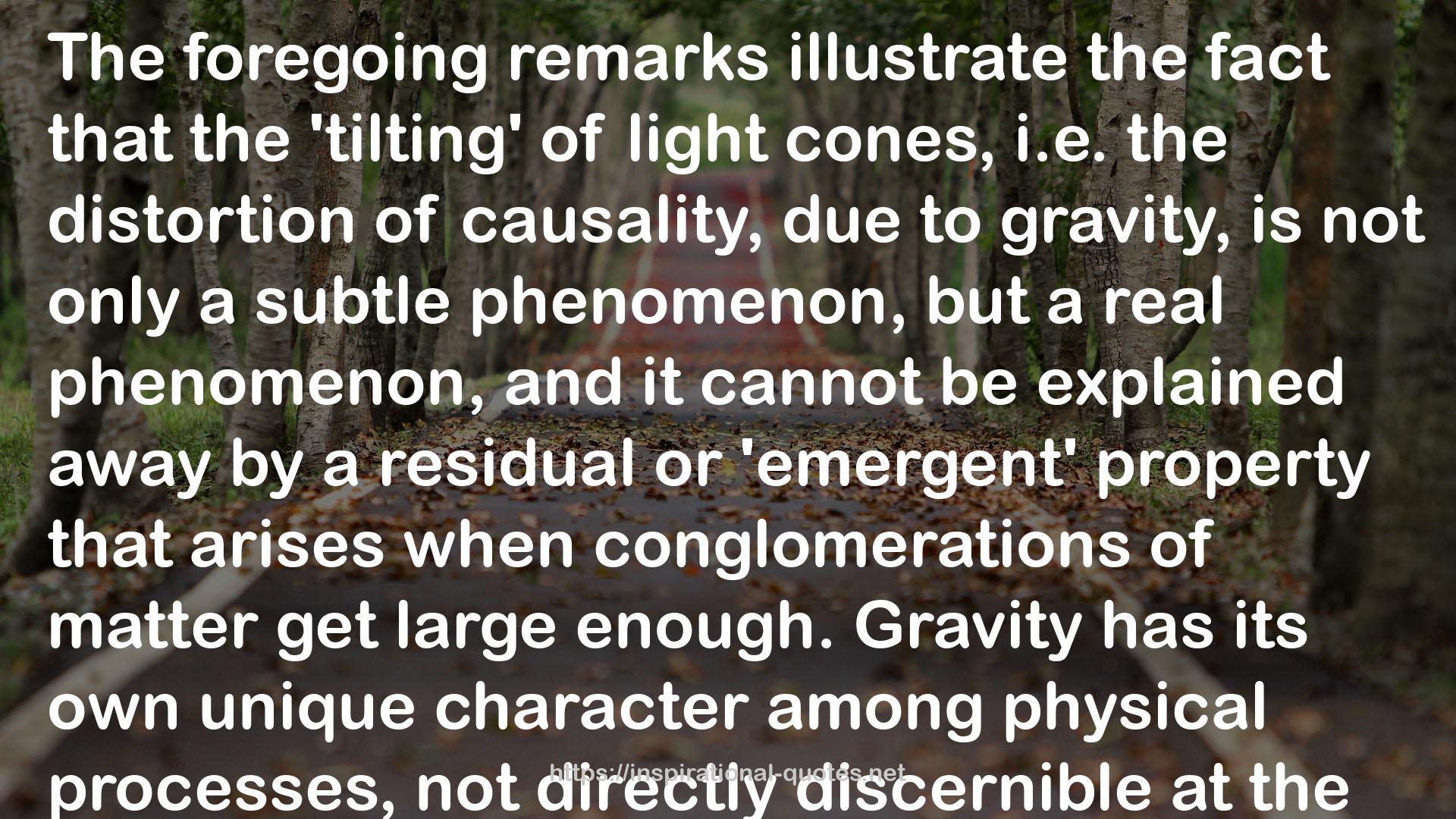" The foregoing remarks illustrate the fact that the 'tilting' of light cones, i.e. the distortion of causality, due to gravity, is not only a subtle phenomenon, but a real phenomenon, and it cannot be explained away by a residual or 'emergent' property that arises when conglomerations of matter get large enough. Gravity has its own unique character among physical processes, not directly discernible at the level of the forces that are important for fundamental particles, but nevertheless it is there all the time. Nothing in known physics other than gravity can tilt the light cones, so gravity is something that is simply different from all other known forces and physical influences, in this very basic respect. According to classical general relativity theory, there must indeed be an absolutely minute amount of light-cone tilting resulting from the material in the tiniest speck of dust. Even individual electrons must tilt the light cones. But the amount of tilting in such objects is far too ridiculously tiny to have any directly noticeable effect whatsoever. "
Image for Quotes

SOME TOPICS